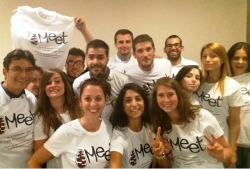Power for research into mitochondrial disease and treatment
At the very heart of the MEET(opens in new window) (Mitochondrial European educational training) project lies a team of 14 young researchers and a consortium of 10 partners that investigated the wide range of diseases and disorders of the mitochondrion. Work packages spanned broad horizons – cancer, DNA mutations, regulation of respiratory complexes and therapeutic strategies. Impressive array of scientific results ‘The project completion has brought about a number of key results, whose applications span from diagnosis to therapy development,’ states Dr Giuseppe Gasparre, MEET project coordinator. Notable is the discovery of novel genes for diagnostic procedures to classify so-far undiagnosed mitochondrial disease phenotypes. Gasparre continues, ‘At the end of MEET, we now have available an unprecedented number of animal models to study mitochondriopathies – Drosophila models that recapitulate impaired respiratory complex I conditions as well as murine models developed during the programme.’ ‘One strength of this project has been to scientifically merge canonical mitochondrial diseases, mainly neuromuscular pathologies, with those related to cancer (the mitochondrial and metabolic aspects of it),’ remarks Gasparre. ‘This has worked really well as the two medical fields are only apparently unrelated.’ The MEET global approach also offered the opportunity to extend outreach and dissemination activities to cancer research associations. The icing on the cake is a new consortium, the TRANSMIT project, which will enrol 11 PhD fellows to specifically address the mitochondrion in relation to cancer under a European Training Networks Marie Curie Programme funded for 4 years. Patient power ‘Patient participation has been the hallmark of the programme, and also what made us most proud,’ emphasises Gasparre. ‘Under their own initiative, for example, they [the researchers] started a campaign to raise funds from runs all over Europe for the International MitoPatients association(opens in new window).’ At the MEET Symposium 2016, Nijmegen, the Netherlands(opens in new window), the unique scope focused on strengthening the bonds between patients and their families and all lab scientists, rather than just a conference. For Gasparre this approach has a two-pronged advantage. ‘The fellows became aware of the gaps needing to be filled to solve patients’ practical problems, which in turn redirected their research. Equally, as patients were the centre of attention, we obtained valuable input.’ On the road to the clinic Drug discovery activity has been carried out by the main industrial consortium partner, Khondrion, using high-throughput screening and development of compounds for mitochondriopathy therapy. Additionally, thanks to this work, novel molecules have entered trial phases, so results are being translated directly from bench to patient’s bedside. Patients who are still without a genetic diagnosis with symptoms of a mitochondrial disease can now undergo genetic testing to verify whether the newly discovered gene may be implicated. ‘This is a pivotal step in deciding therapy, as when a gene is identified as responsible, it is at least possible to understand the molecular basis of the phenotype, and reveal pharmacological targets,’ explains Gasparre. Stressing just one of the many impacts of the MEET project, Gasparre sums up its holistic approach – ‘By attempting to bridge the gap between scientists and families, we hope we have managed to considerably shorten the distance and to humanise science, bringing it back to its primary role: a service.’







